“Next year, Madonna is getting a haircut.”
We were bumping along the dusty streets of Bagan, and our horsecart driver was talking about one of his two horses (named Madonna and Rambo) who was pulling us around. He had just finished explaining how horsehair is used to make lacquer at the nicer workshops, and thus Madonna would be going in for haircut soon to make some extra money on the side. When we had reserved our hotel for Bagan while back in Yangon, we had checked “yes” for “airport transport.” Little did we know that the taxis waiting for us outside the airport would be…horsecarts.
We were lucky that our horsecart driver turned out to be phenomenal, doubling as a tour guide who gave us background information about the town, its temples, and Myanmar in general. He had learned English well just by practicing with his customers over his past 20 years on the job. Bagan is one of the main places to visit for tourists to Myanmar, despite still being just a small city compared to others in the country. It consists of New Bagan, where guesthouses, houses and restaurants are, and Old Bagan, a plain dotted with literally thousands of ancient temples that has once been a thriving city over a thousand years ago.
After dropping off our bags and bracing ourselves for the brutal dry heat, we hopped back in the horsecarts for a full-day tour of the ancient city. Madonna and Rambo led us on dirt paths to the most interesting temples (of the over 2000 to choose from) according to our driver. Despite the fact that Bagan is so popular with tourists, we barely saw any others all day. Some of the time we felt like tomb raiders, being handed flashlights outside a dark, cavernous pagoda and told to explore. In others, we encountered friendly young novice monks who shyly offered grins for our cameras. Some had ancient crumbling frescoes, others had imposing Buddhas, several stories high, looking down at worshipers with enigmatic smiles. We saw Buddhas of every size, shape and color, mysterious sunlit passages, and perilous stairs that led up to overlooks above the plain that we would never have been allowed to climb in the West, thanks to rules and liability.
Our temple stops were also filled with delightful encounters with locals, many of whom set up shop outside the more interesting temples in hopes of getting a little money from the few tourists passing through. One pair of children pestered us about buying postcards from them that no one really wanted. When one of my friends finally caved, they were happy and walked off smiling and singing “Waka Waka,” by Shakira. When we recognized the song, we started singing it back to them, and the scene turned into a mini-song and dance session outside the temple. The other ubiquitous item for sale was sandpaintings, made with sand from the nearby Irrawaddy River, and sand artists were set up seemingly outside even the most obscure of temples, hopefully waiting that some tourist would buy their work (as a group, we managed to leave with an astounding number of sand paintings). At another temple, some women selling skirts painted our faces with the traditional Burmese makeup that almost all women and children in the country wear during the day, thanaka, a watery paste made of tree bark that cools the skin and dries tan. Our driver also stopped at the oldest family-run lacquer workshop in the area, where we got to see all fourteen time-consuming steps of high-quality lacquermaking. The final stop of the day was the top of one of the higher temples (where we finally saw a mass of other tourists), where we watched the sunset over the plain of temples.
Perhaps what was so enchanting about Bagan was not just giant Buddhas, but the fact that unlike other archaeological wonders that I’ve visited, these seem to still be alive. Instead of being protected in museums, governed by fenced-off pathways that show you the right place to walk, while guards make sure you don’t touch anything, in Bagan you can wander literally anywhere your legs, or horsecart, or bicycle, will take you. You can touch the frescoes if you want to, you can pay a local to give you some information they’ve memorized in English about a temple, you can see worshipers, or signs of them, by way of flowers or offerings in even the most obscure-seeming of temples. Unlike the Roman Forum, or the Coliseum, or countless other ancient Western sights, Bagan doesn’t feel like a museum. We had to take your shoes off at the entrance of every temple (as you do all across Asia), out of custom and respect, so at the end of the day our legs were covered with 900 year old dust.
The next day, we woke early for our driver to take us to a different temple overlook, where we watched the sun materialize out of the haze, casting a morning glow on all of the temple spires. Soon after, I had to leave, to get back to Yangon in order to catch my flight to return to Laos for Pi Mai (the subject of a later post). I said goodbye to the other girls, and got back in the horsecart one last time to ride to the airport. On the way, the driver pulled over to say hi to a friend. A monk walking on the side of the road saw me, pulled out a digital camera from his robes, and took a photo of me, in a hilarious reversal of things.






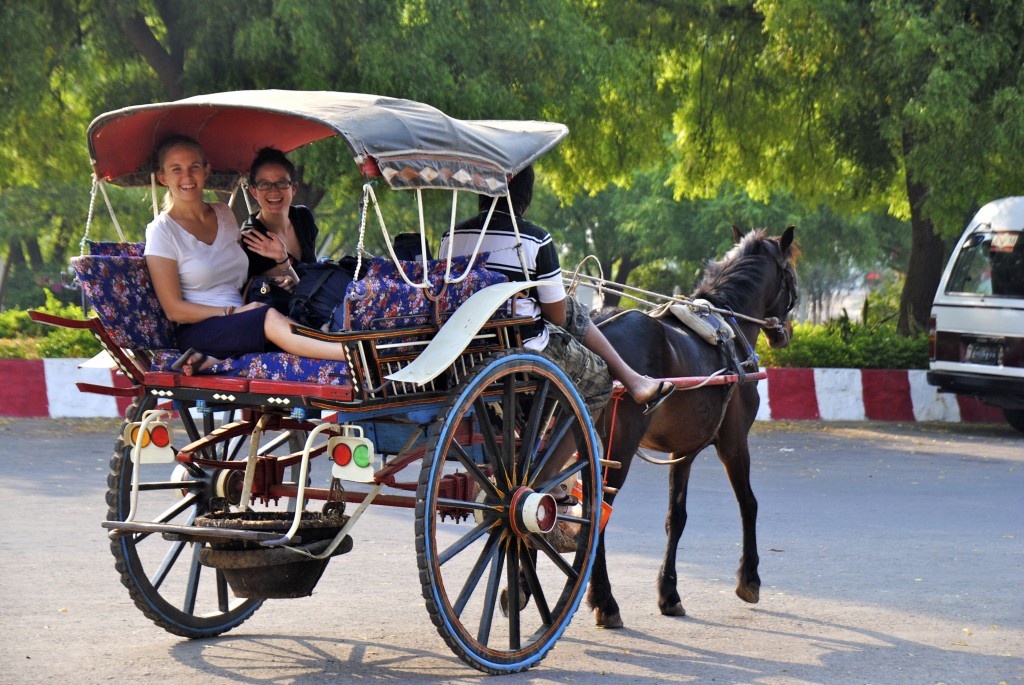
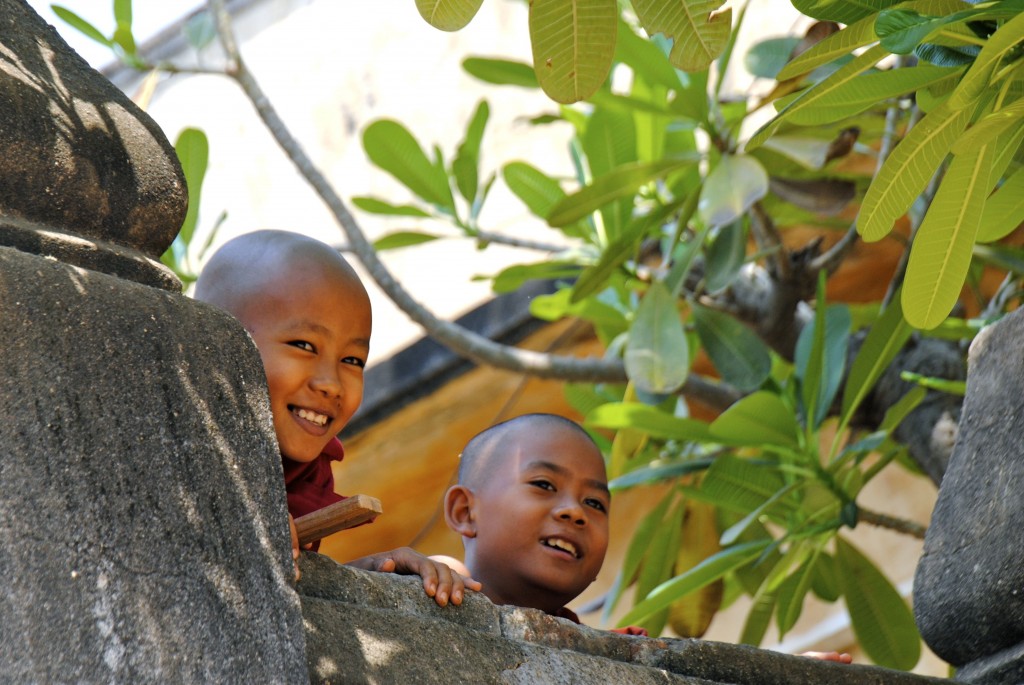
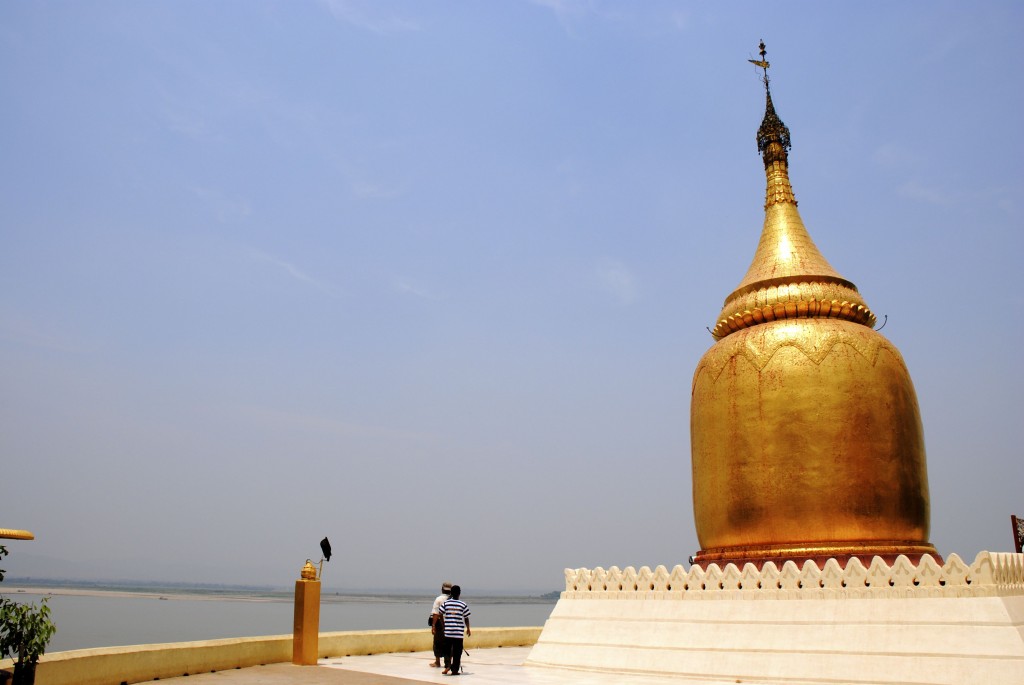
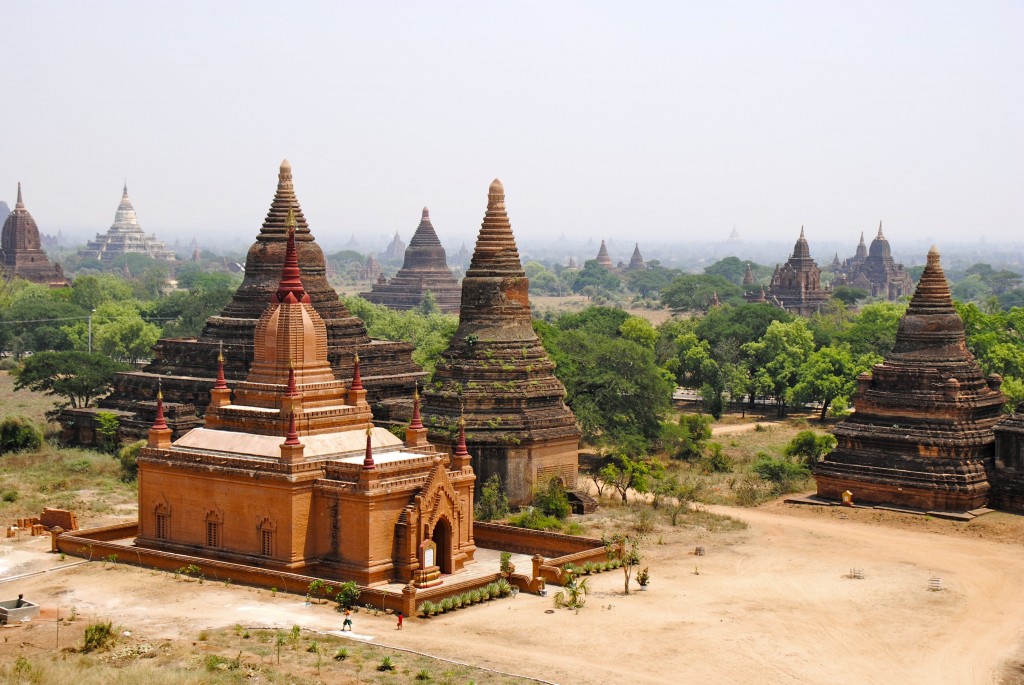
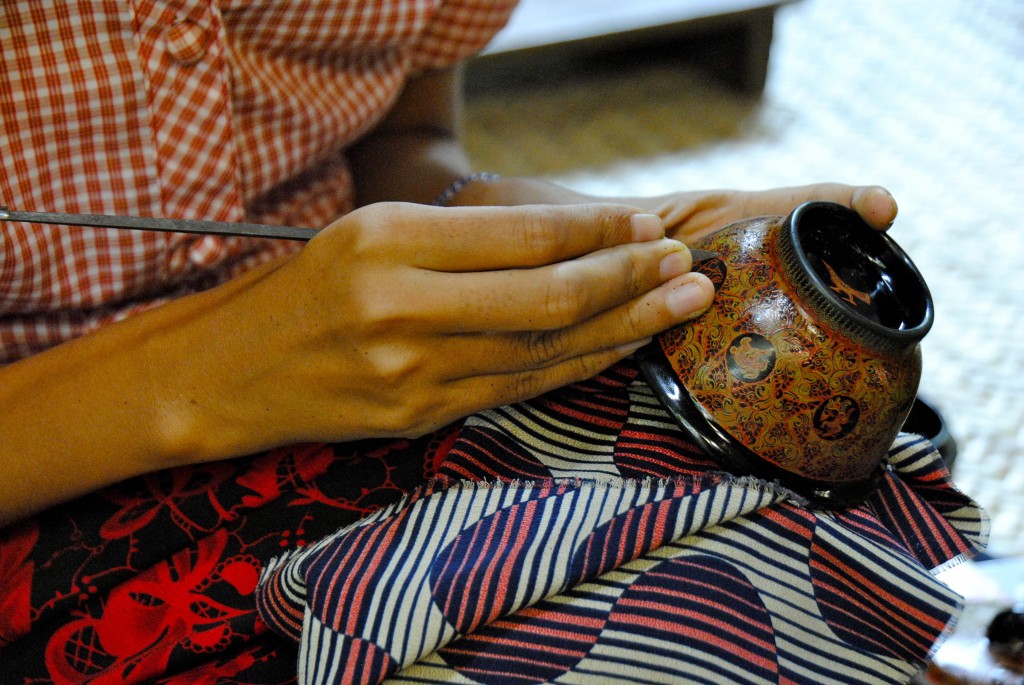
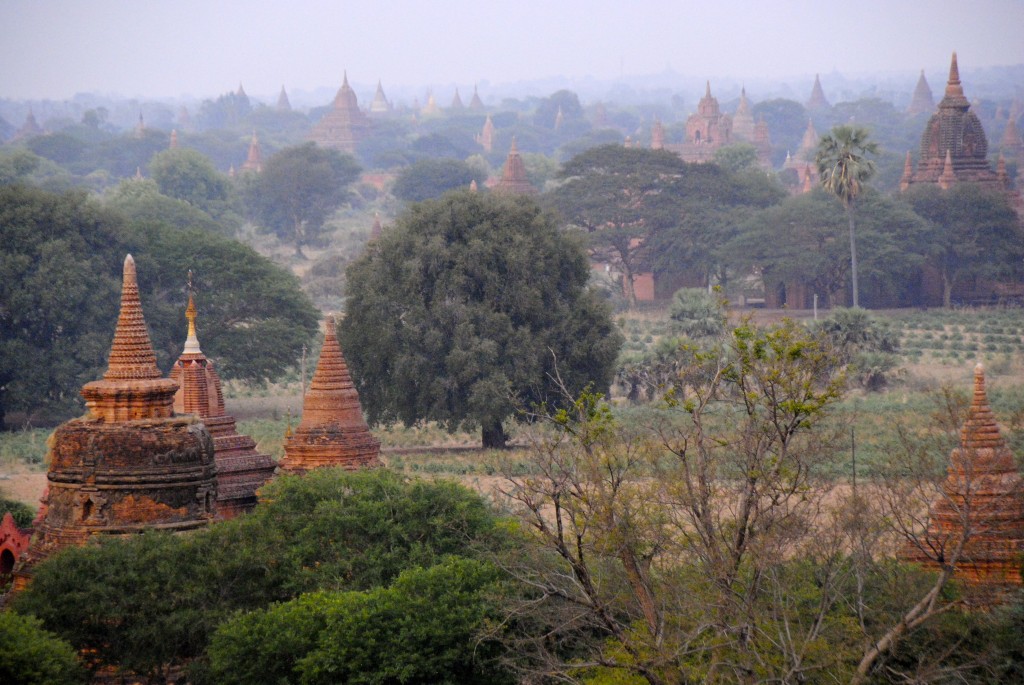
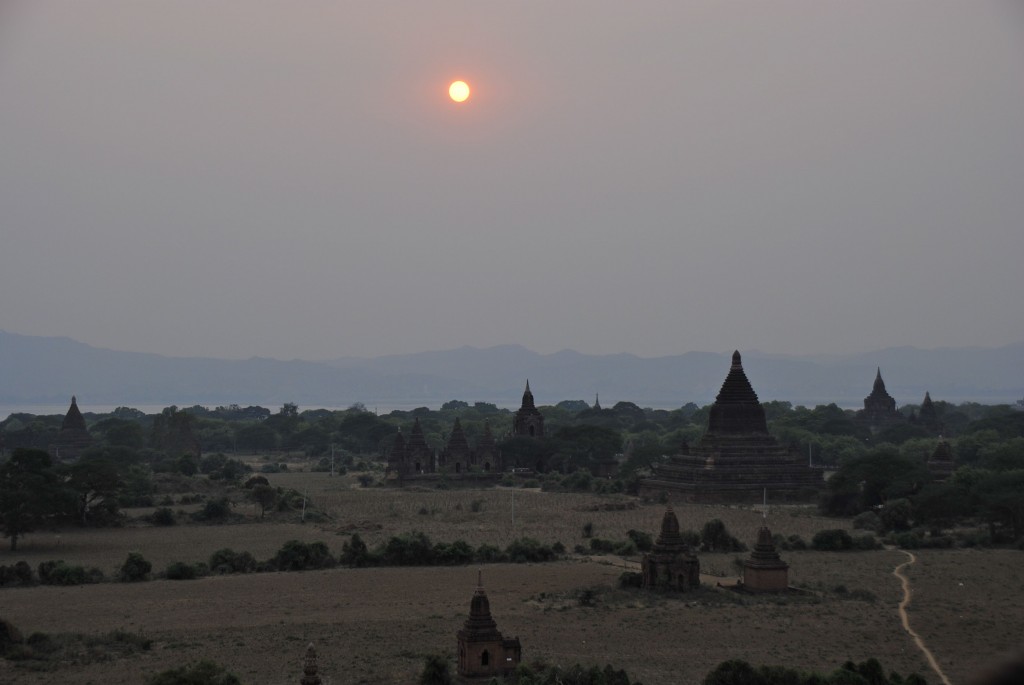
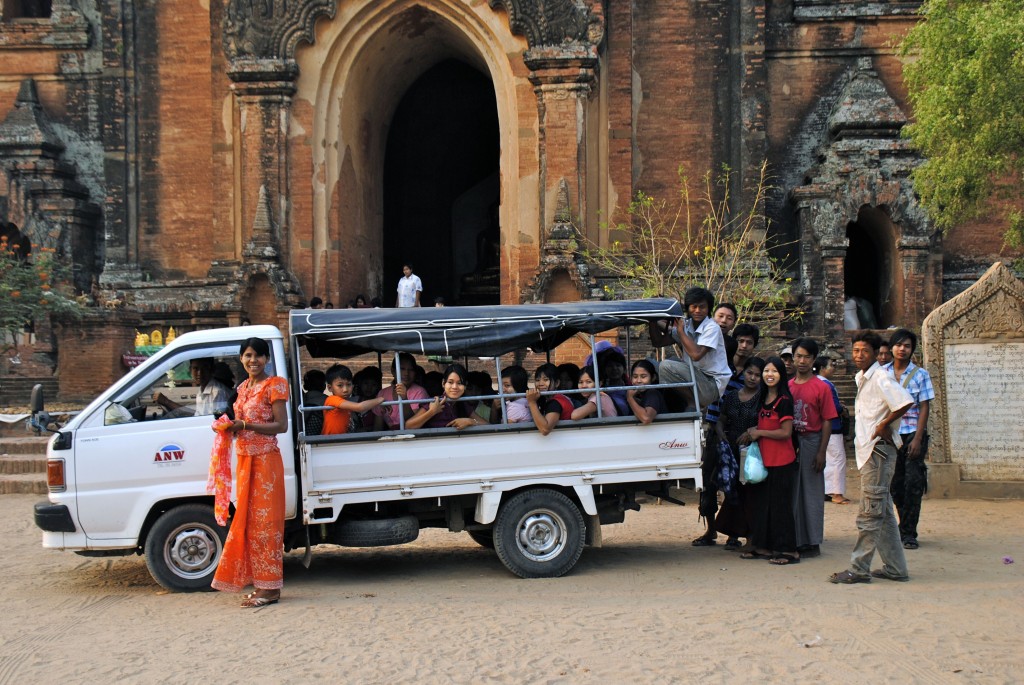
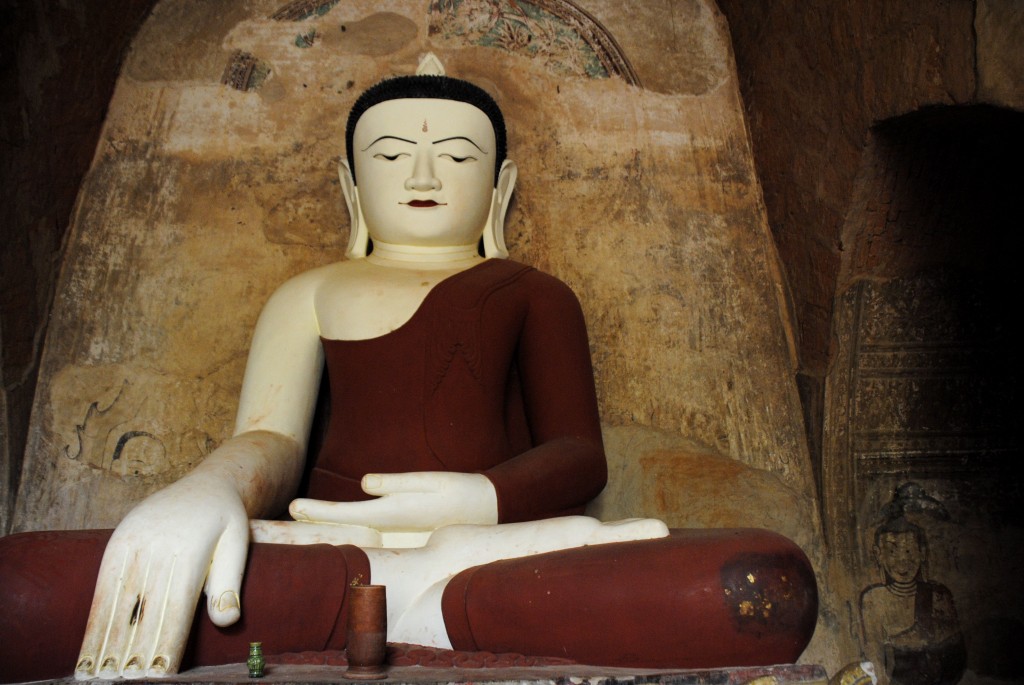
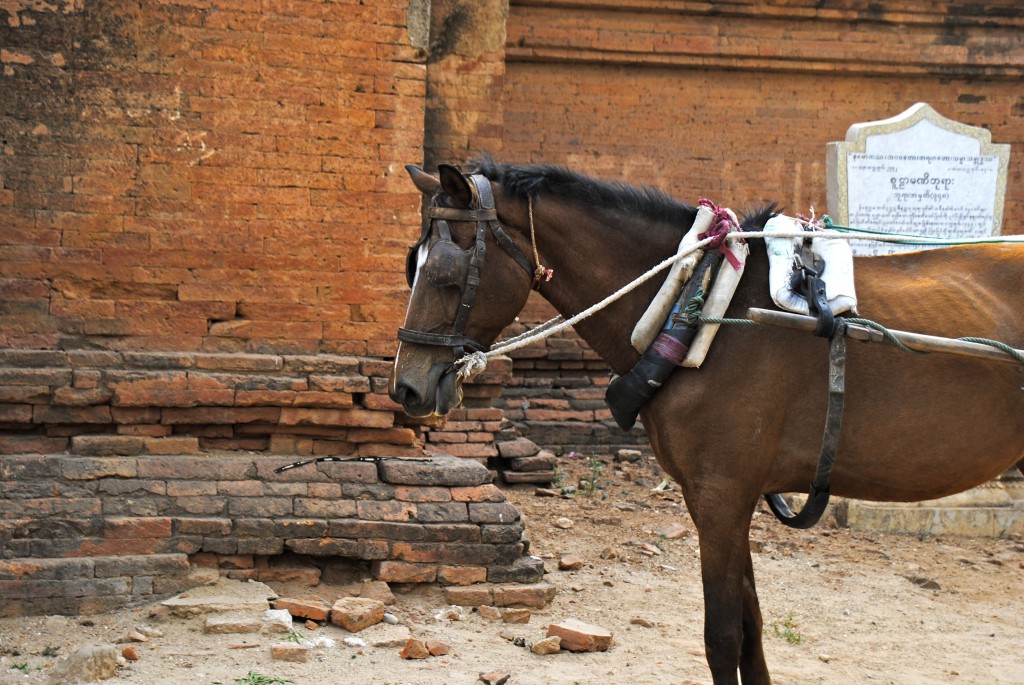
Hi Hannah – Just wanted to tell you that I save my posts for the morning so I can start my day with wonderous thoughts. Some of your photos remind me of the pictures Grandpa took in Korea. He was a wonderful photographer as are you. You both see the world with an artist’s eye.